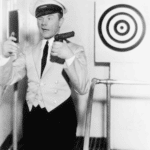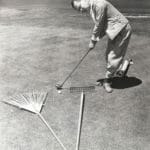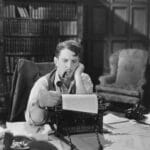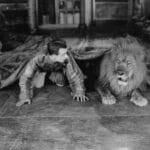Why use checklists?
![]()
I'm a huge fan of checklists. If you have used them and love them, great. If you need some persuasion then I'd strongly recommend `The Checklist Manifesto' by Atul Gawande. It's a very readable and highly compelling explanation of how checklists can help just about any enterprise, how they work and when to use them.
One of the things I learnt from Gawande's book was that checklists can be traced back to a US Air Force competition in 1935.
 The history of checklists - Inspiration from the ashes
The history of checklists - Inspiration from the ashes
In the summer of 1934 the US Air Corps proposed replacing the B-10 bomber with a new multi-engined bomber. It had to be able to fly at least 1,020 miles, be able to carry a 2,000 pound bomb load and reach at least 200 mph. The specification was circulated to the major aircraft manufacturers. Their prototypes would be evaluated in a competition.
Realising that they could not substantially improve on the existing designs for twin engined planes, Boeing went for a radical, four-engined design. Working in complete secrecy, Boeing devised the Model 299.
It took its maiden flight in July 1935 and had innovations such as wing flaps for better performance at low speeds, electric trim tabs on its control surfaces for improved handling, hydraulically operated constant≠speed propeller and a host of other new ideas.
It created a sensation and was quickly dubbed the `Flying Fortress' in the press. It was the clear favourite to win the competition, exceeding all the specification requirements by a massive margin. There was nobody to meet it as it was flown in for delivery to the assessment in Dayton. `No one expected it for another hour', such was its speed.
On October 30th 1935 the prototype took off, watched by a crowd of spectators. Leslie R. Tower, Boeing's senior test pilot, was observing. At the controls was Major Ployer P. Hill, the Air Corps' chief test pilot. The plane rose to 300 feet, stalled, rolled to the side and crashed back into the airfield, exploding.
Investigation showed a recently added safety feature, a lock on the elevator, had not been turned off before take≠off. The lock was intended to stop the control surfaces being damaged by high winds when the plane was on the ground.
The mechanism was controlled from the cockpit, but no one remembered to turn it off before take≠off, causing the stall. This was despite the involvement of Tower - who probably knew more about the plane than anyone alive ≠ and Hill, the Air Corps' top test pilot.
The General Staff concluded that `Because the airplane crashed, it must be too complex for anyone to handle safely.' They went on to order 133 competitor aircraft, the Douglas B≠18 Bolo.
It was a devastating blow for Boeing, almost putting them out of business.
Still convinced of the benefits of the Flying Fortress, a group of test pilots decided to use a novel approach. Rather than focusing on `more training', they came up with a simple list of things that should be checked before and during take-off.
Armed with this new approach, and using a legal loophole that enabled the Air Corps to buy a further 13 aircraft for `testing', they were able to fly 1.8 million miles in the Model 299 without incident. The US Air Corps were slowly won round to the merits of the model, eventually ordering nearly 13,000 of them.
The legacy of this outside of aviation was the very simple but powerful concept of the checklist. It enables humans, with our unreliable memories, to handle high levels of complexity with confidence and ease.
Measurement and reporting has become increasingly complex. Checklists are the ideal tool to help both with implementation and everyday running of those processes. I'm a bit of an advocate, which means l use them all the time. Here are some of the checklists I use when I'm helping clients set up KPIs. You can find them all in my book, KPI Checklists.

 The history of checklists - Inspiration from the ashes
The history of checklists - Inspiration from the ashes





